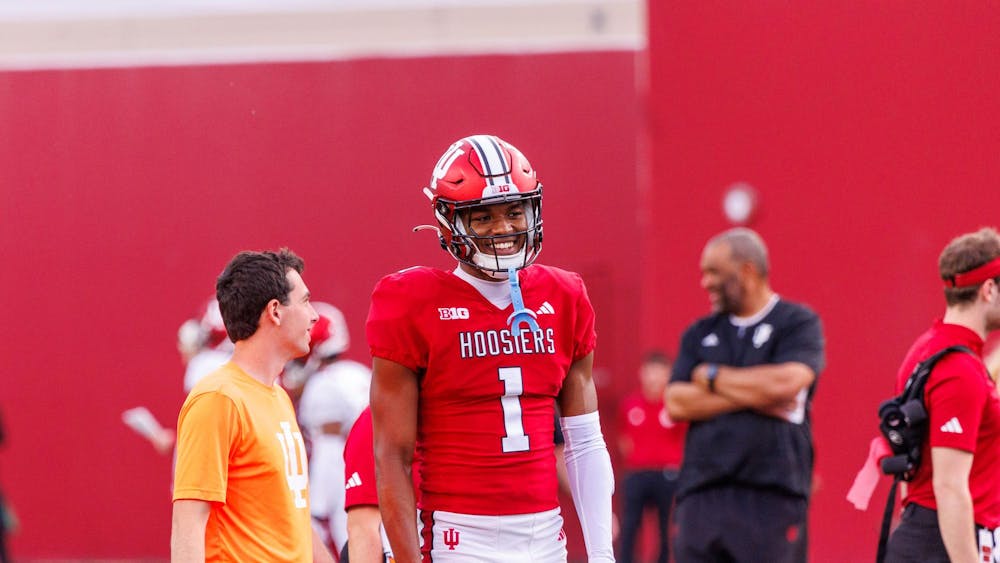Sky Pemberton drives his father from Bedford to a kidney dialysis center in Paoli four times a week. The center was the closest option that was accepting patients at the time, but he said he still spends $40 a week on gas just for the trips.
The two live off of a $1300 a month disability check and other forms of aid, Pemberton said.
“And if you start doing numbers on that, with electric and bills, you run out of money pretty quick,” Pemberton said. “Everybody in my neighborhood is in the process of being behind on their house payments.”
With prices climbing across the board and pandemic aid programs ending, people on the margins are in crisis, even as others benefit from rapid spending in the economy.
For the top 1% of earners, a good financial market led to a $6.5 trillion growth in wealth, and top companies have had their most profitable year since the 1950s. The unemployment rate sits at 3.6% and in 2021, wage growth reached an all-time high of 15.6%.
But the cost of food — for both grocery stores and restaurants — has increased by 9%, ultimately outpacing any lasting wage growth. High demand and low global supply have driven up gasoline prices, which after a small decrease from earlier weeks, averages about $4.90 a gallon in Indiana.
Megan Betz, the president and CEO of community resource center Mother Hubbard’s Cupboard, has seen strain among patrons as a result of increasing prices.
The organization, which provides food and runs advocacy and education programs to members of Bloomington and surrounding communities, serves the most vulnerable populations, according to Betz. In MHC’s 2021 survey, 42% of respondents identified as people with disabilities, and many others have experienced job loss or hours reduction, medical expenses or COVID-19-related illness in their families.
“Eight to ninety percent of patrons live well below the poverty line,” Betz said. “They're seeing more job loss and are choosing which bills to cover each month, more than what we’ve seen in previous years.”
In an effort to combat inflation, the Federal Reserve hiked interest rates by three quarters of a percentage point June 15, its largest increase since 1994. The goal is to discourage spending, but some economists, including IU economic policy expert David Audretsch, worry it may cause a recession.
“We chose to defer the pain,” he said. “Not that that was a bad policy, but now it’s coming home to roost.”
Audretsch said inflation today reminds him of what he experienced in the 1970s. Even during the inflation and unemployment of the ‘70s, companies were profiting. According to Audretsch, this same paradox occurred during the Great Depression and is happening again today.
Although he thinks there are downsides to the Fed’s decision, Audretsch said it will be successful at reducing inflation.
In the meantime, many federal programs that provided aid during the pandemic are now expiring, such as a provision that allowed more people to be eligible for Medicaid. The provision is set to expire in mid-July. If not extended, many people will have to submit appeals to maintain eligibility.
Another form of pandemic aid gave extra money to low-income Hoosiers in the Supplemental Nutritional Assistance Program. These benefits expired at the end of May, bringing allotment amounts to pre-pandemic levels with a 20% increase in budget for cost-of-living adjustments and other reevaluations.
“Some calls I’ve gotten are like ‘How often can I shop there, because my SNAP budget is going down and I just can’t purchase enough food to make our household work,’” Betz said.
MHC launched a direct assistance program this year, which provides $200 dollar VISA cards to cover things like car repairs or minor medical expenses. The program has $3,300 set aside for each quarter, but Betz said application volume was so high that funds were depleted in less than a month.
Pemberton said the extra $100 he received from SNAP wasn’t enough to adjust to the high prices. Those on the bottom are feeling pushed to the edge, Pemberton said, while those above a certain income level can deal with higher prices.
“It’s absolutely gouging the poor,” Pemberton said.
In April of this year, the Guardian analyzed the financials of top companies to find profit growth that ranged from 5% for Kroger to 809% for Steel Dynamics. In earnings calls, executives admitted to passing inflation off to consumers and growing their profits; Kroger, which has five locations in Bloomington, said small amounts of inflation are “always good for business.”
“It is unsurprising that in a moment following major individual, physical struggle we’re seeing this unquestioned inflation that is really just profiteering,” Betz said.
When corporations have too much power, they can keep prices high even as demand falls, Audretsch said. However, the government doesn’t have the proper instruments to solve the problem at the root, he said, so they use the power of the Fed instead.
Audretsch said inflation has unequal effects.
“Not everybody suffers the same,” he said. “It’s the poor and the people on fixed incomes like the retired people and the elderly who are the ones that get hit the most.”
Sky Pemberton said he was frustrated that even though his dad spent time in the Navy and worked to the top of every job he had, he still runs the risk of not receiving essential care because of high prices.
“I’m worried about how much money we have because I don’t know if I can get him to dialysis to keep him alive,” Pemberton said. “Because without that, you die. That’s it.”






